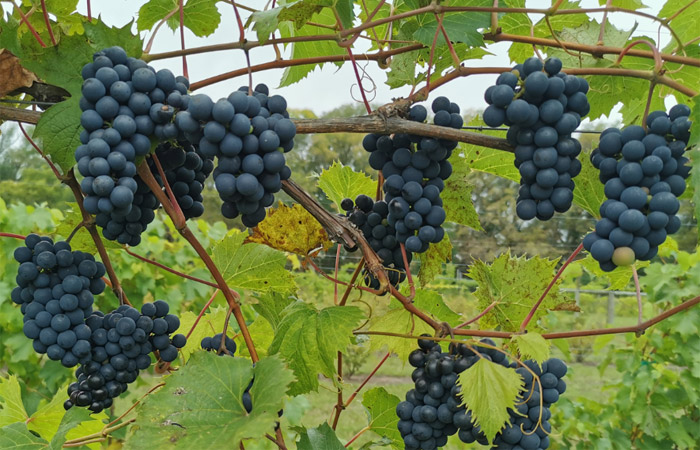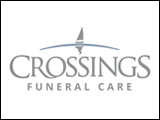As unlikely as it may seem there are grapes that can survive here in Manitoba and produce a bountiful crop while they are at it. Granted all of these grapes do require shelter and protection from the vicious arctic winds. Even with the best shelter possible many varieties simply don’t stand a chance. Of the several selections we have tested and tried, I have never seen a grape that withstood the abuse of winter better than the Valiant Grape. The name is truly fitting.
Valiant Grape was selected by Dr. Don Peterson at South Dakota State University in 1982 as a cross between our native Riverbank Grape (Vitus riperia) with a cultivar called Fredonia (Vitis labrusca). This grape has been a prairie success ever since, very similar to the classic Concord Grape but with a better cold tolerance.
As a vine, it needs a support of some kind to climb up on and could grow as large as 20′ tall and wide. Producing dark blue grapes about a 1/2 inch wide, the fruit is smaller than your average table grape, but undeniably tasty. Tangy blue skin covers sweet green flesh inside and ripens in late August/early September. These grapes hold 4-5 seeds that are small enough to eat or are easy enough to spit out. They are grown in clusters of up to 20 and a mature vine can produce up to 40 pounds of fruit a year. It can be used in jams, jellies, baking and wine making.
While Valiant is the most resilient there are others that can grow here as well. Many of which boast larger or sweeter fruit. The Prairie Star Grape and Louise Swenson Grape are currently battling for the title of “best white grape for Manitoba”. Both have sufficient cold tolerance to winter while also producing fruit with excellent flavour. However, they will require the right location and dedicated care to raise them up safely in our harsh winters.
All grape vines require a full sun location with good drainage, consistent watering, and prefer a slightly acidic soil. It is not uncommon for young vines or even mature ones to have tip dieback in hard winters. It is recommended to gently free young vines from the trellis and lay them flat on the ground for the first few winters. The snow cover will help protect them from frost damage. At some point, the vines will be mature enough that they will remain securely anchored to the trellis and become more cold tolerant. When there is winter dieback, a good pruning will help to revive the vine. Fruit is always produced on the fresh growth so regular pruning is quite beneficial. There are several different methods to this but the basic principles are always the same: establish a few main branches/trunks every spring or remove all the little branches and any dead material. The healthy vine will respond with fresh growth and hopefully an abundance of fruit with it. Some grapes require a pollinator to produce fruit but the majority will be self-fertile all on their own.
With so many varieties of grapes on the market we are still testing them out to see who’s-who, but my recommendation is always the same: first time grape growers should start with Valiant to get some practice as it is the most forgiving to beginners.




